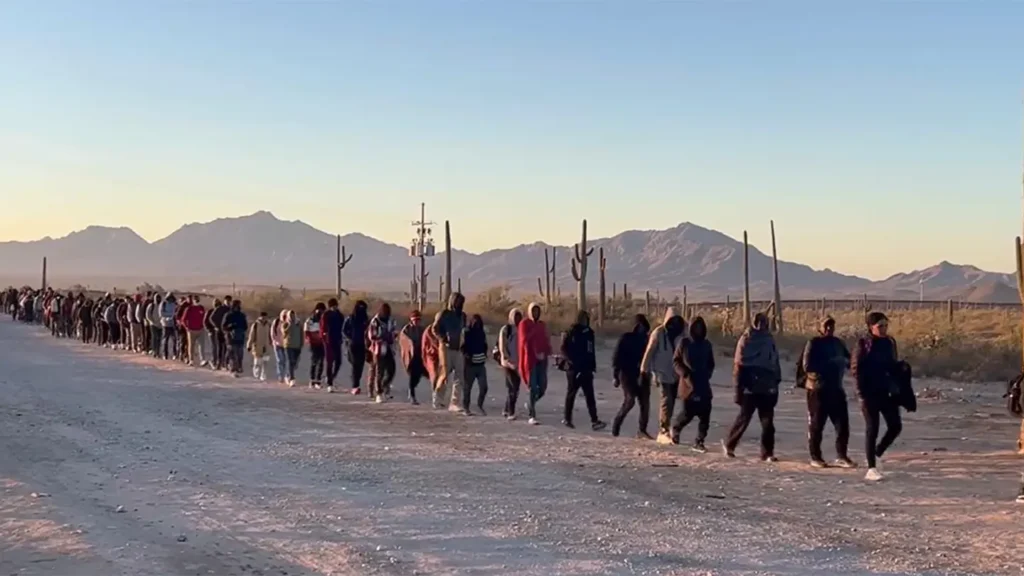U.S. southern border crossings have fallen to levels not seen in decades, following aggressive enforcement policies implemented under President Trump. Government data and reports indicate a sharp decline in both daily encounters and monthly totals since the change in administration.
Key Facts & Figures
- In one recent report, the number of migrant encounters at the southern border dropped by more than 60% shortly after Trump took office. This was measured by comparing the first week of his presidency to the last week of the prior administration.
- During the first full month of the Trump administration, appraisals showed a 96% decline in border crossings compared to the highs during the previous administration.
- There was a record-low monthly figure for apprehensions in March of this year, with about 7,000+ illegal entries recorded along the southern border. This represented roughly a 95% drop compared to the same month in the previous year.
- Daily “encounters” of migrants — which includes those intercepted between ports of entry and those entering via official crossing points — have consistently trended downward under the current enforcement regime.

What Contributed to the Decline
Several policy shifts and enforcement actions appear to have played a role:
- Ending or severely restricting “catch and release” practices, making fewer exceptions for migrants released pending hearings.
- Enhanced border wall construction and physical barriers along key sections of the southern border.
- Increased deployment of federal agents and, in some cases, military or Marine support to assist in border security operations.
- Suspension or overhaul of programs that facilitated legal but informal crossings or parole-based entries, including certain mobile app-based entry scheduling systems.
- Strong messaging from the federal government about swift apprehension, deportation, and consequences for unauthorized border entry.
Implications & Observations
- The sharp drop has been hailed by proponents of stricter border enforcement as evidence that the policies are working to discourage illegal immigration.
- Critics caution that some of the data may not capture all crossings (“gotaways” who enter undetected), and that rapidly changing policies might lead to humanitarian and legal concerns.
- Border communities are experiencing shifts — fewer crossings can reduce strain on border patrol and detention facilities, but also affect migrant populations, legal entry systems, and local services.
- The trend suggests that enforcement — along with deterrent policies — has become a key component of the administration’s immigration strategy.

